Abstract
Changes in response rate similar to frustration effects were studied in a two-lever situation. Responding on one lever on a fixed-interval schedule produced access to water for 5 sec and an exteroceptive stimulus. In the presence of this stimulus, responding on another lever on a fixed-interval schedule produced access to water for 5 sec and terminated the stimulus. Occasional omission of a previously scheduled reinforcer after responding on the first lever resulted consistently in increases in rate on the second lever during the immediately succeeding interval. In another procedure, occasional presentation of a previously unscheduled reinforcer after responding on the first lever resulted consistently in decreases in rate on the second lever during the immediately succeeding interval. Changes occurred after the first omissions or presentations and were about the same in magnitude as the procedure continued over several sessions. Typically, an increase or decrease in rate was maintained throughout an entire 100-sec interval. Changes in rate on the second lever of approximately the same magnitude also occurred when rate on the first lever was near-zero under a schedule that differentially reinforced behavior other than lever pressing.
Full text
PDF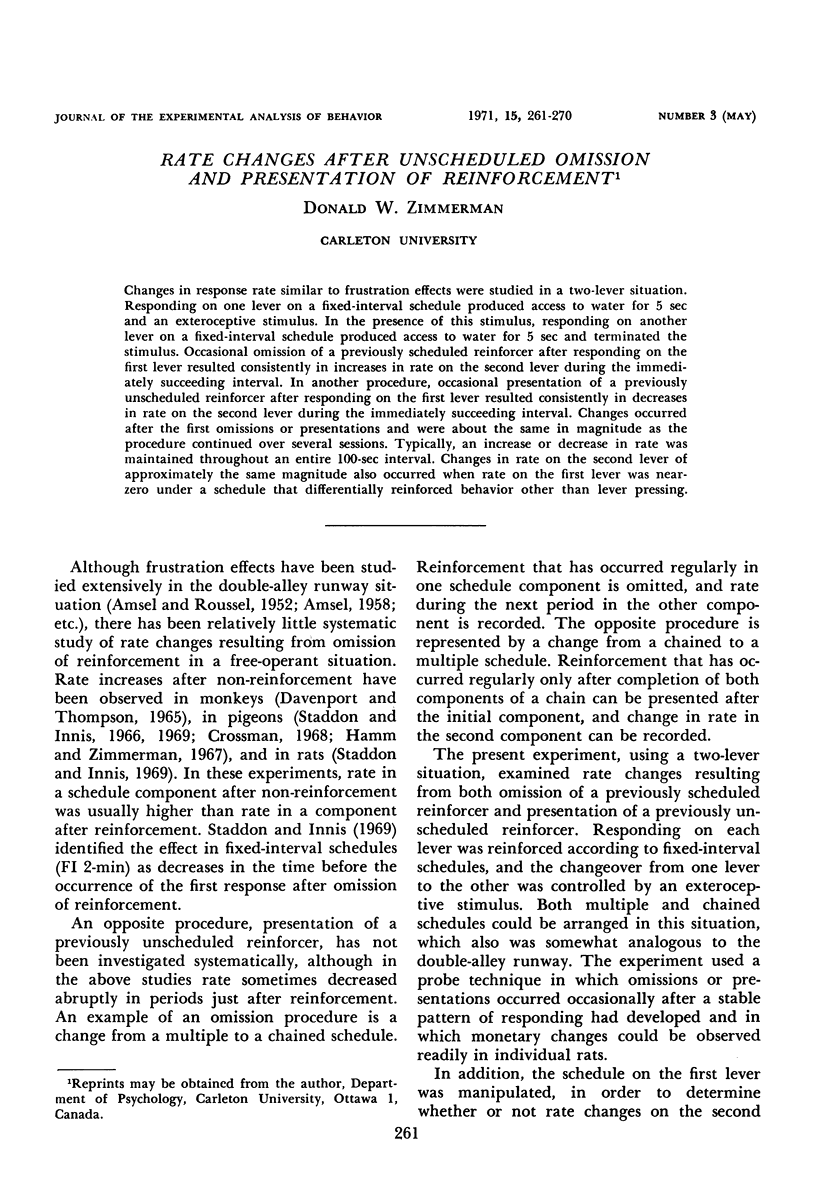
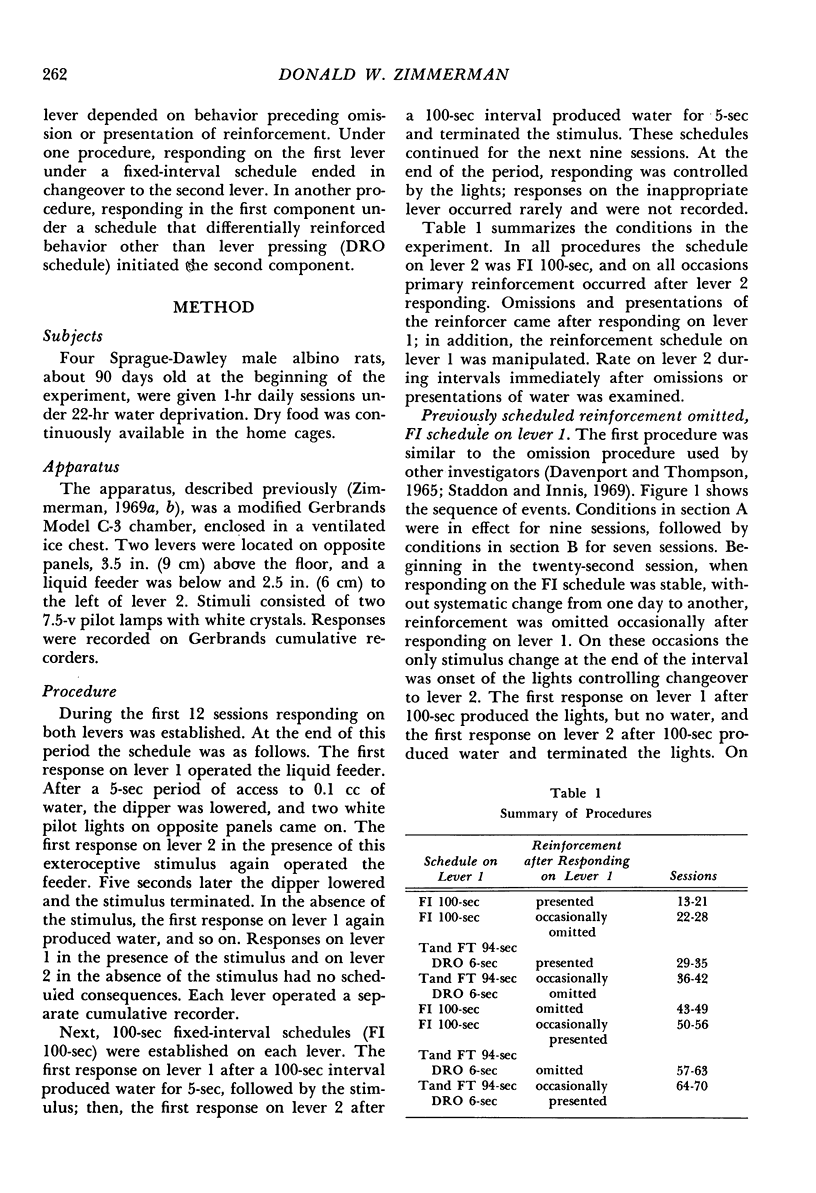
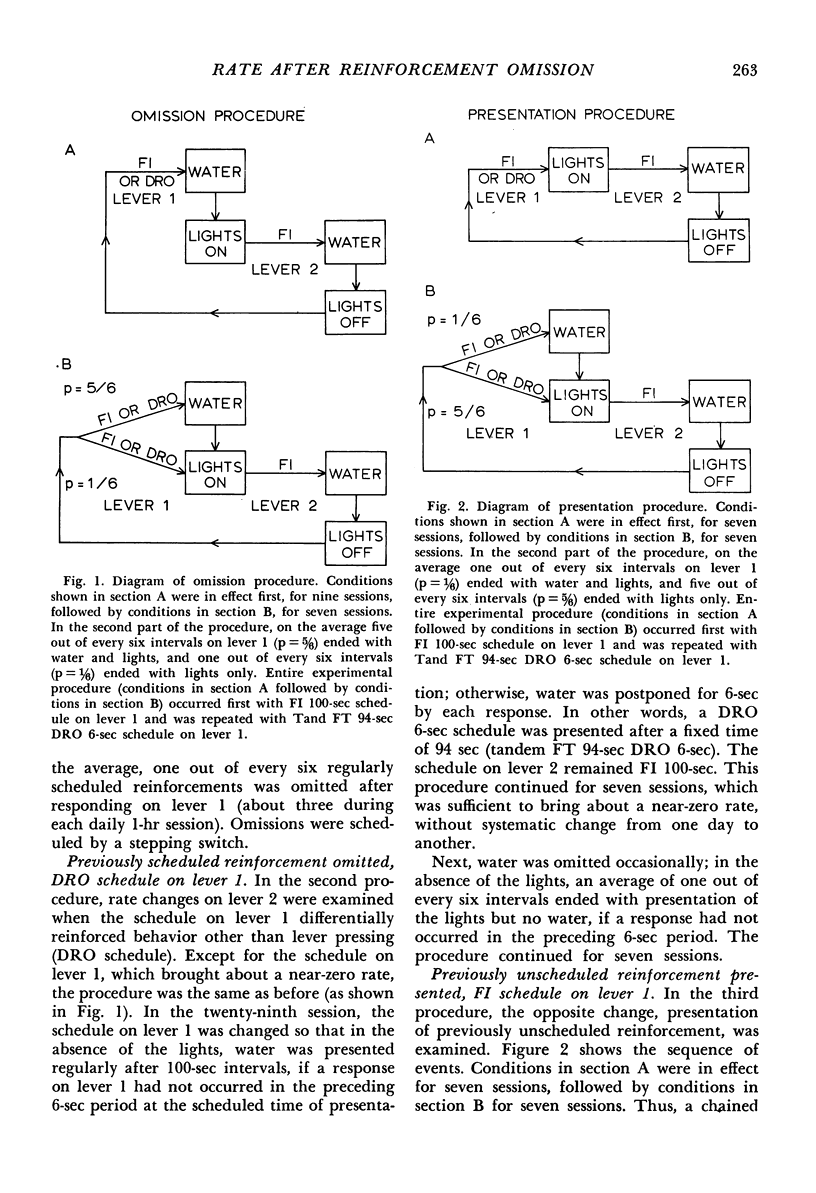
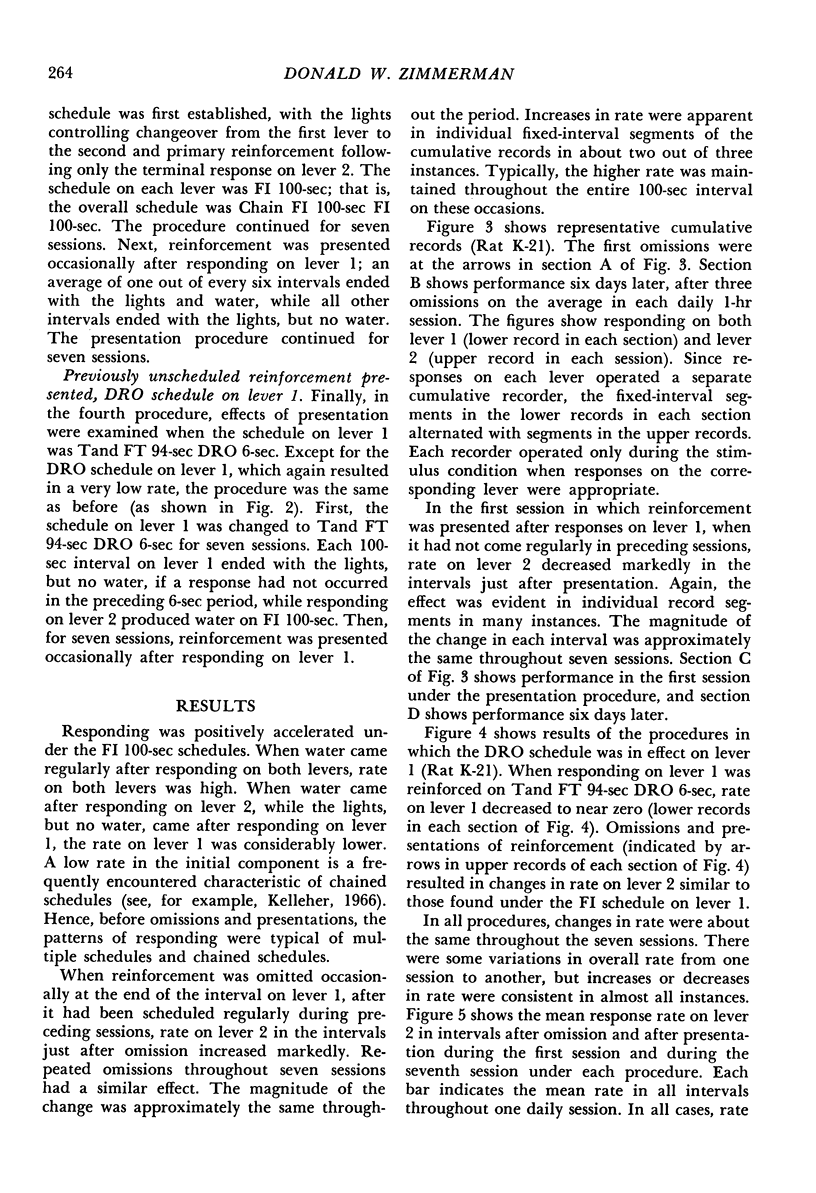
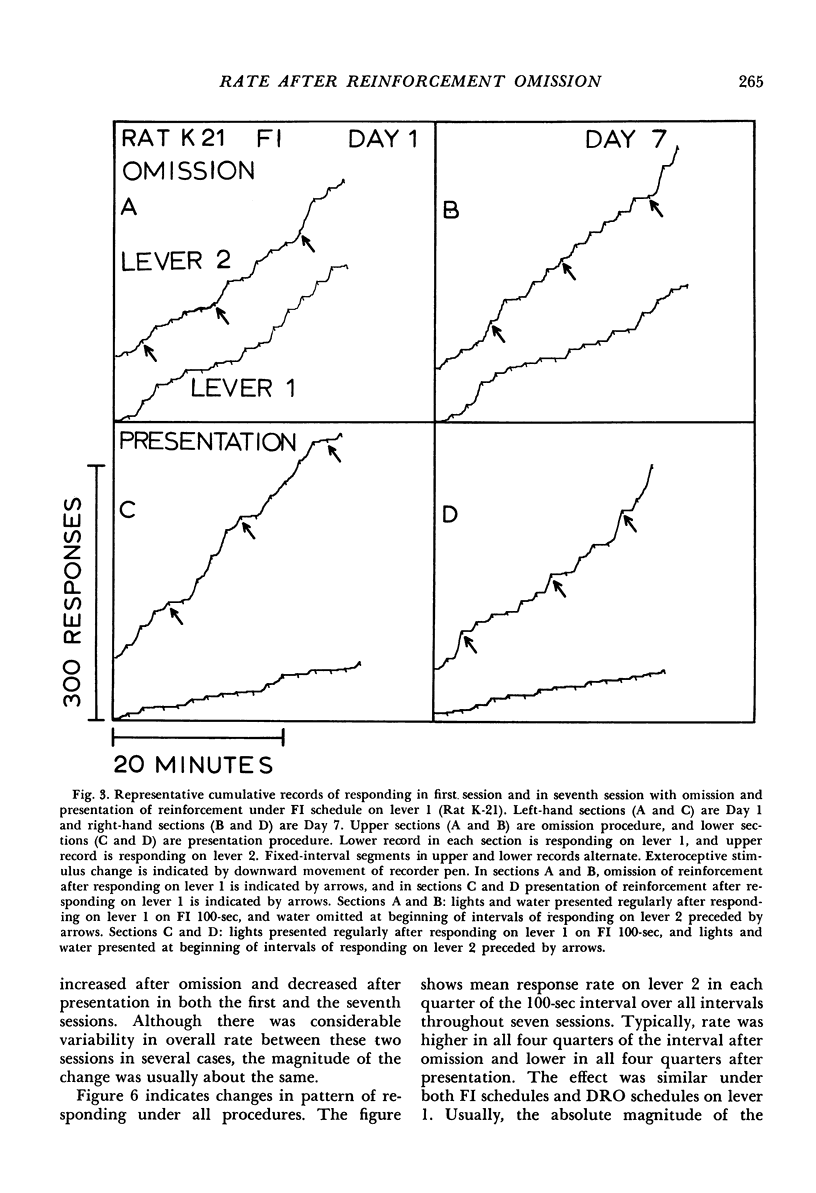
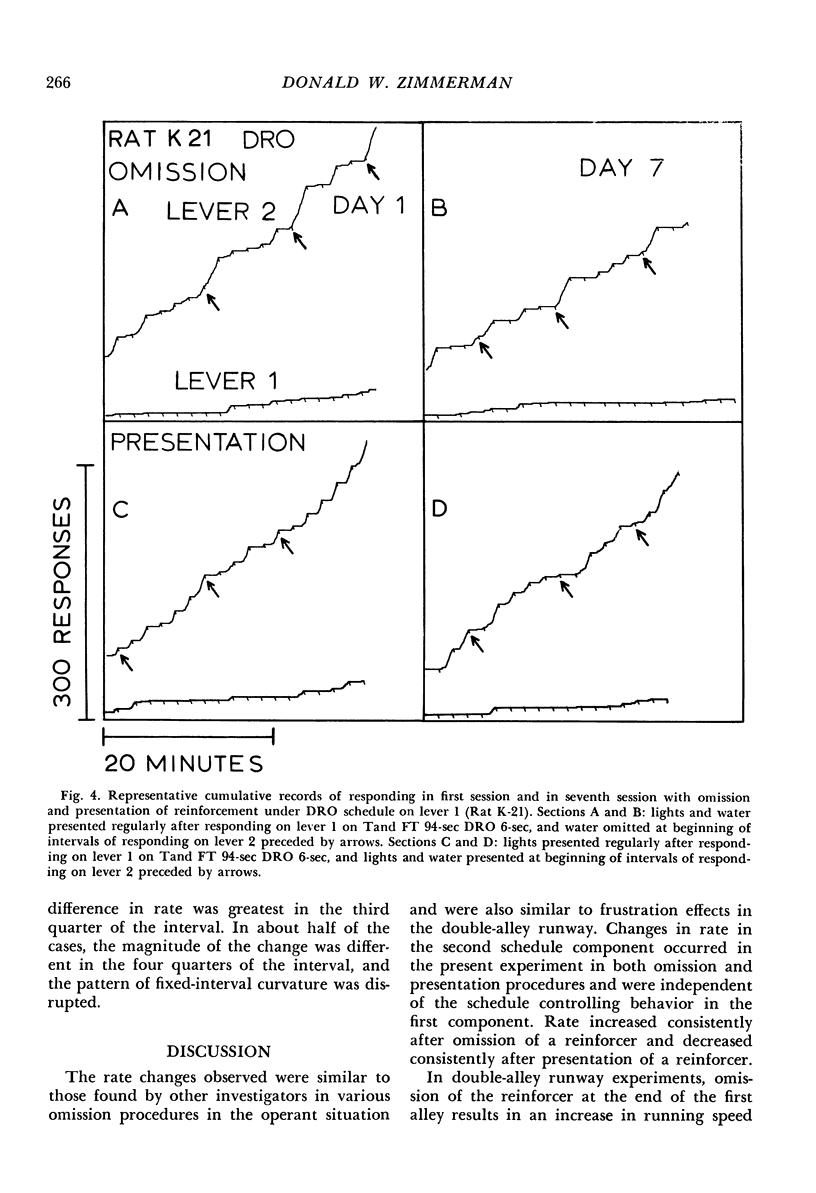
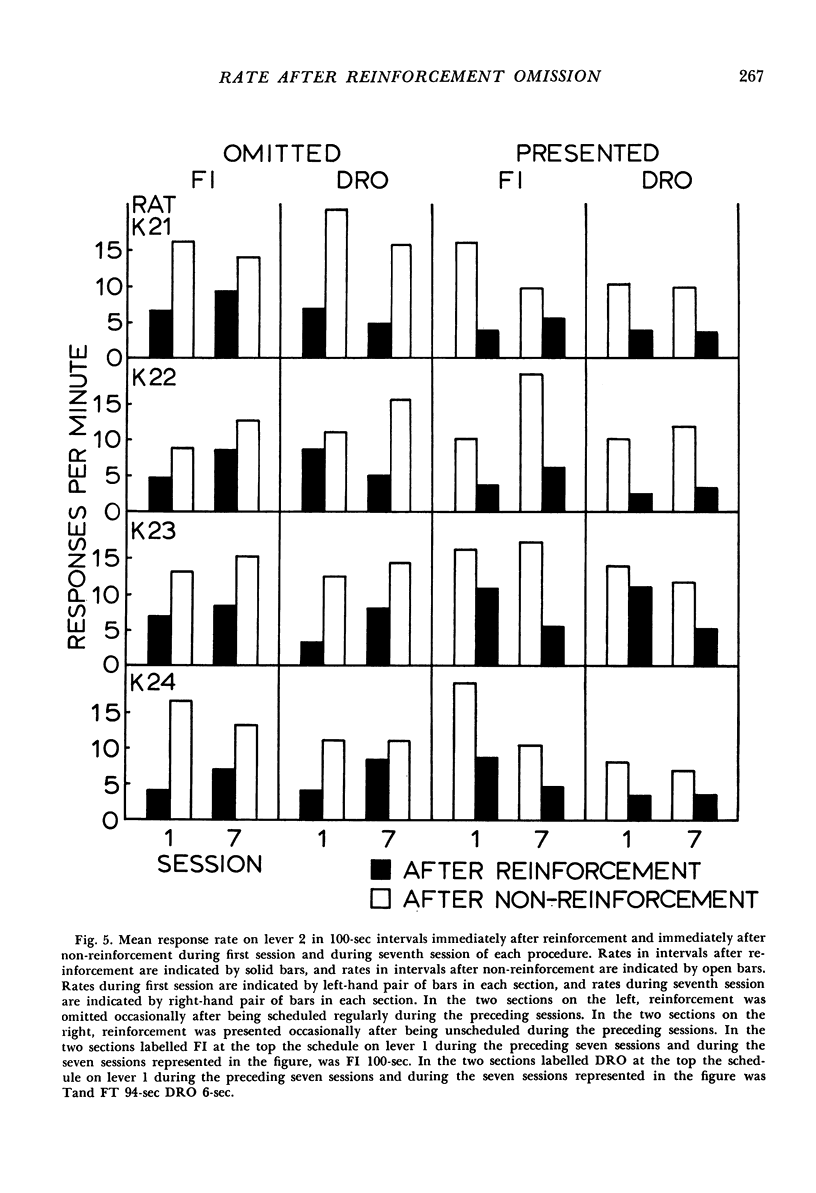
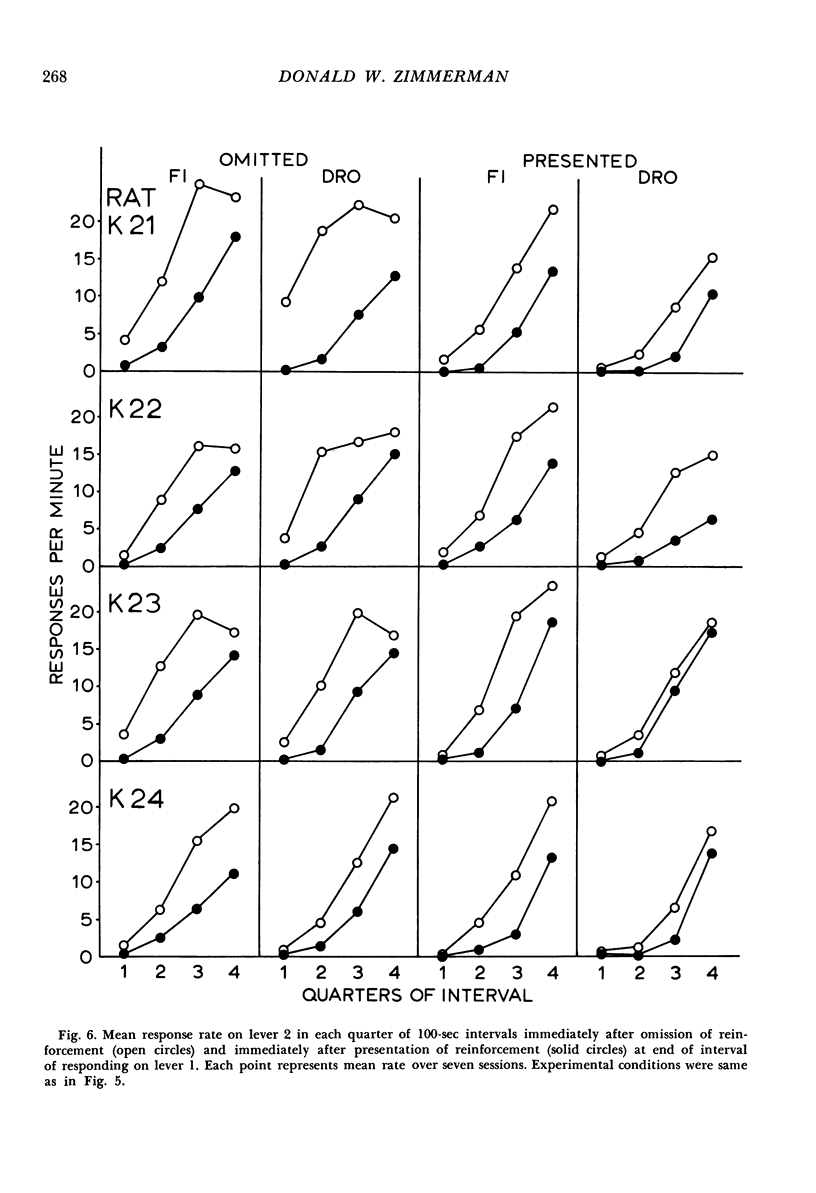
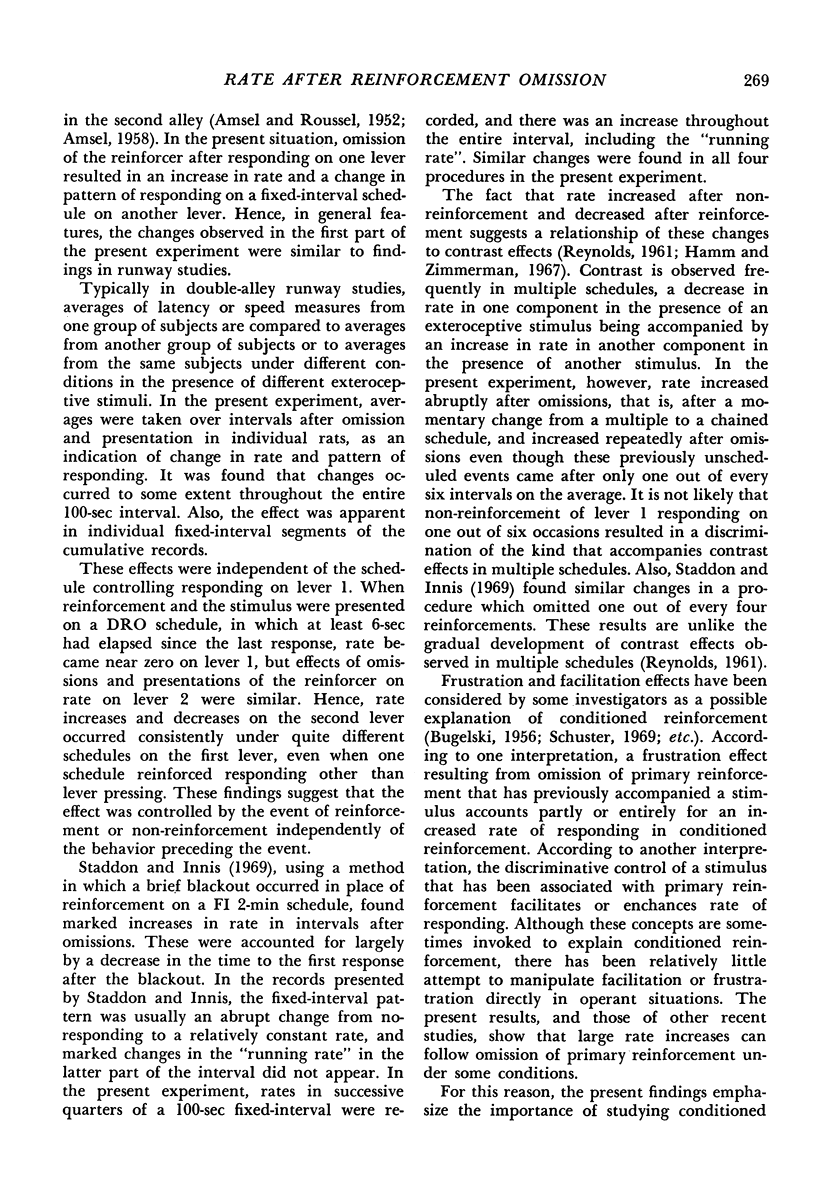
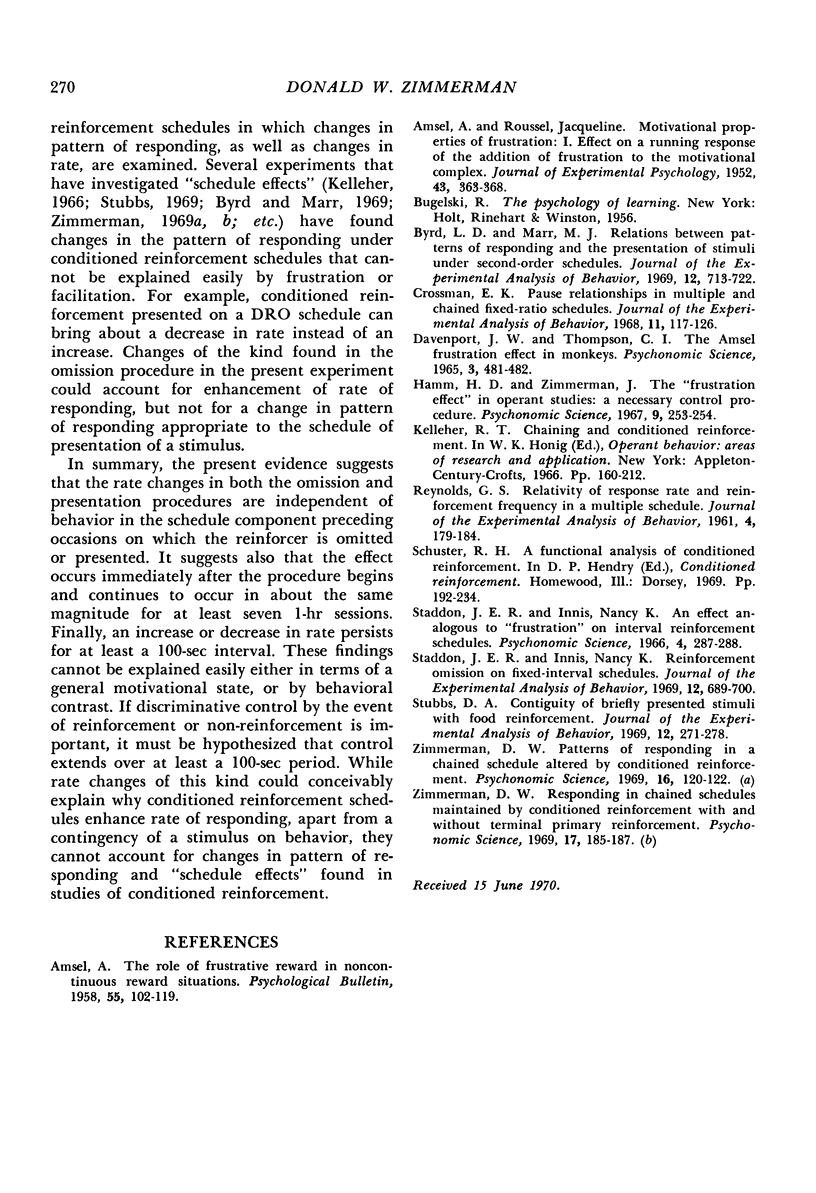
Selected References
These references are in PubMed. This may not be the complete list of references from this article.
- AMSEL A., ROUSSEL J. Motivational properties of frustration. I. Effect on a running response of the addition of frustration to the motivational complex. J Exp Psychol. 1952 May;43(5):363–366. doi: 10.1037/h0059393. [DOI] [PubMed] [Google Scholar]
- AMSEL A. The role of frustrative nonreward in noncontinuous reward situations. Psychol Bull. 1958 Mar;55(2):102–119. doi: 10.1037/h0043125. [DOI] [PubMed] [Google Scholar]
- Byrd L. D., Marr M. J. Relations between patterns of responding and the presentation of stimuli under second-order schedules. J Exp Anal Behav. 1969 Sep;12(5):713–722. doi: 10.1901/jeab.1969.12-713. [DOI] [PMC free article] [PubMed] [Google Scholar]
- Crossman E. K. Pause relationships in multiple and chained fixed-ratio schedules. J Exp Anal Behav. 1968 Mar;11(2):117–126. doi: 10.1901/jeab.1968.11-117. [DOI] [PMC free article] [PubMed] [Google Scholar]
- REYNOLDS G. S. Relativity of response rate and reinforcement frequency in a multiple schedule. J Exp Anal Behav. 1961 Apr;4:179–184. doi: 10.1901/jeab.1961.4-179. [DOI] [PMC free article] [PubMed] [Google Scholar]
- Staddon J. E., Innis N. K. Reinforcement omission on fixed-interval schedules. J Exp Anal Behav. 1969 Sep;12(5):689–700. doi: 10.1901/jeab.1969.12-689. [DOI] [PMC free article] [PubMed] [Google Scholar]
- Stubbs A. Contiguity of briefly presented stimuli with food reinforcement. J Exp Anal Behav. 1969 Mar;12(2):271–278. doi: 10.1901/jeab.1969.12-271. [DOI] [PMC free article] [PubMed] [Google Scholar]


